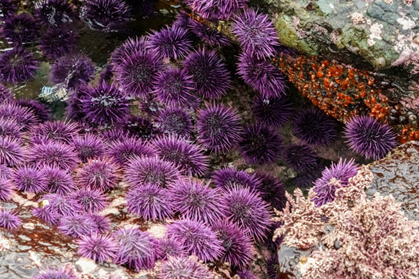

14th July 2022 (7 Topics)
Context
A research team has been set out to investigate what prompts urchins to munch their way out of a home. They discovered that the availability of kelp scraps, or detritus, might be the deciding factor.
About
Kelp Forests:
- Kelp forests are large brown algae that live in cool, relatively shallow waters close to the shore. They grow in dense groupings much like a forest on land. These underwater towers of kelp provide food and shelter for thousands of fish, invertebrates, and marine mammal species.
- Kelp forests harbor a greater variety and higher diversity of plants and animals than almost any other ocean community. Many organisms use the thick blades as a safe shelter for their young from predators or even rough storms.
- Among the many mammals and birds that use kelp forests for protection or feeding are seals, sea lions, whales, sea otters, gulls, terns, snowy egrets, great blue herons, cormorants, and shore birds.
- These dense canopies of algae generally occur in cold, nutrient-rich waters. Because of their dependency upon light for photosynthesis, kelp forests form in shallow open waters and are rarely found deeper than 49-131 feet.
- In ideal conditions, kelp can grow up to 18 inches per day, and in stark contrast to the colorful and slow-growing corals, the giant kelp canopies tower above the ocean floor.
- Like trees in a forest, these giant algae provide food and shelter for many organisms.
- Also like a terrestrial forest, kelp forests experience seasonal changes.

Importance of Kelps:
- Kelp is a type of large, brown seaweed that grows in shallow, nutrient-rich saltwater near coastal fronts around the world.
- Seaweed farming is a sustainable practice, mainly because these farms help improve water quality.
- Kelp also produces a compound called sodium alginate
- They are high in iodine, potassium, magnesium, iron, calcium which are all nutrients your body needs to stay healthy.
- Kelp forests harbor a greater variety and higher diversity of plants and animals.
- Kelp is low in fat and calories.
- Seaweed also has the ability to use carbon dioxide to grow, which also helps balance out high nutrient levels in surrounding waters.

Sea Urchin:
- The marine animals known as sea urchins look something like globe-shaped pincushions.
- They are members of the scientific group Echinodermata, meaning “spiny skinned.”
- Sea urchins are covered with long, movable spines.
- These spines help the slow-moving animal to “walk” and are also used to keep away enemies.
- There are more than 900 species, or types, of sea urchin. They live in all seas except those of the Polar Regions. They are found on the ocean floor, usually on hard surfaces.
- Physical Features:
- Sea urchins are often shades of red or purple. They vary greatly in size.
- Sea urchins are invertebrates, which mean they do not have a backbone. They do, however, have an internal skeleton known as a test.
- Sticking out of the test are the spines and some pincer like organs known as pedicellariae, both of which may be poisonous.
- Like its close relative the sea star, a sea urchin has tube feet to help with movement. These feet are often tipped with suckers. Along with the spines and pedicellariae, the tube feet help the sea urchin to grab food and bring it into its mouth.
- Sea urchins mainly eat plant material. The mouth contains a strong jaw piece called Aristotle’s lantern, which is made up of five bony teeth.
- The teeth can be pushed out of the mouth to scrape algae and other substances off rocks.




